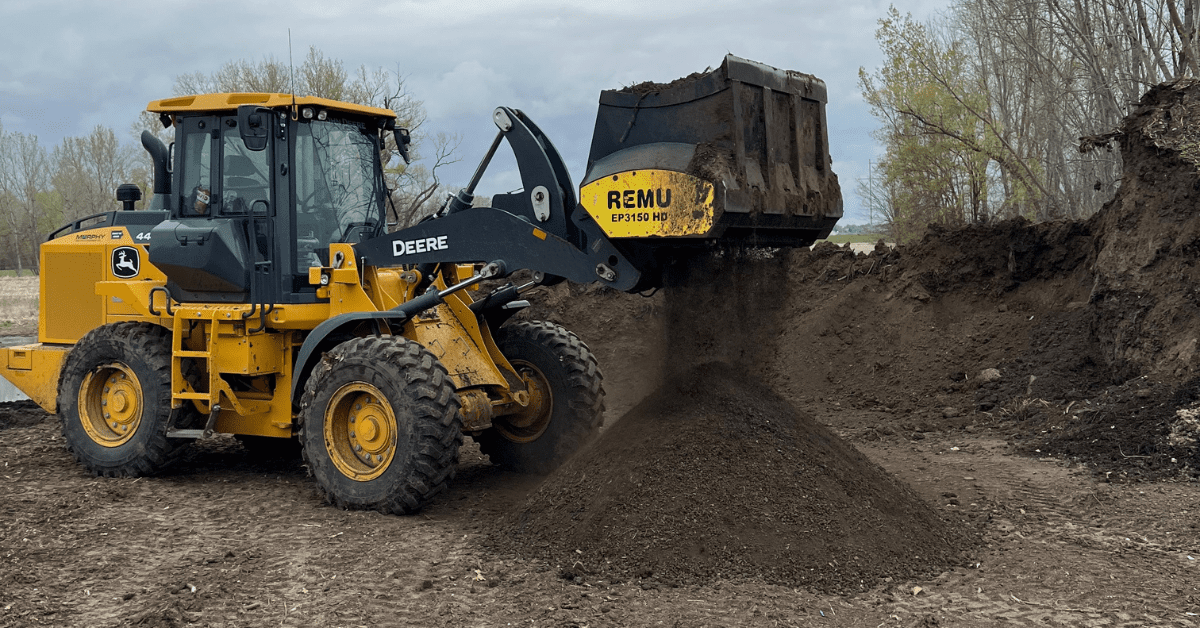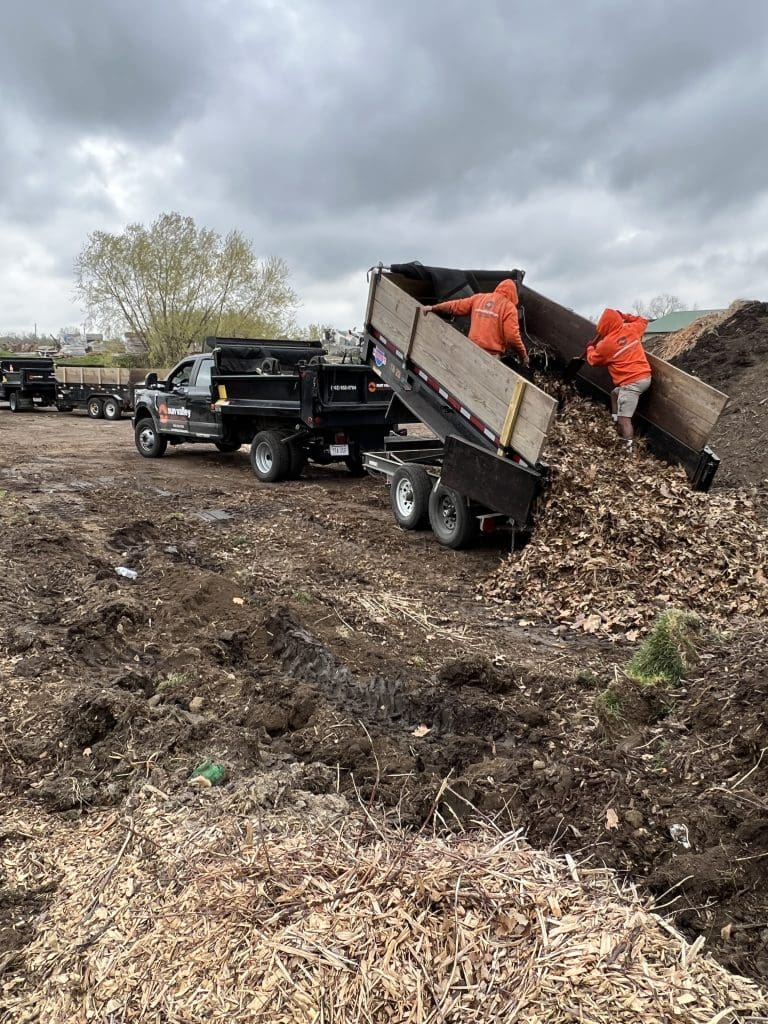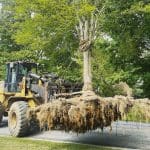
How often does your company have to haul away piles of green waste from a job to a dumpsite? One alternative is to start composting your green waste.
Sun Valley Landscaping, based in Omaha, Nebraska, has been turning their green waste into compost for over 10 years. They sell their compost from their supply yard and use it on their own projects.
“Composting absolutely offers savings!” says Eric Walker, Sun Valley’s supply yard manager. “It saves tons of time and money for our landscape division since our crews do not have to take extra trips to a dumping facility so it saves quite a bit on the bottom line. Once we have the final product, we are able to monetize it by selling it. What we’ll do is source a loamy soil from various enterprises and have that brought in to our facility. We’ll then mechanically screen the compost and mix it with the soil in-house for our topsoil with compost blend. So we’re able to stretch out our costs and multiply our revenue on the top line.”
Composting Process
Composting helps break down organic matter by creating an ideal environment for microbes to do their work. It is a valuable soil amendment that can improve soil characteristics.

The length of time for the composting process depends on the carbon-to-nitrogen ratio, surface area of particles, aeration, moisture and temperature. A ratio of about 30:1 is ideal for the activity of the microbes in the compost. Because the organisms breaking down the organic materials require large amounts of nitrogen it’s important to add other materials that supply nitrogen for rapid and thorough decomposition.
Walker says they mostly put herbaceous waste like grass clippings and leaves in their pile.
“We avoid pine needles due to the acidity and other woody materials such as branches and wood chips due to the low mineral content and time for it to break down,” Walker says.
As microorganisms decompose the organic materials, the temperature in the pile rises dramatically. The center of a properly made heap should reach a temperature of 110 to 140 degrees F in four to five days.
According to the Missouri Botanical Garden, piles smaller than three feet cubed (27 cu. ft.) will have trouble holding heat, while piles larger than five feet cubed (125 cu. ft.) don’t allow enough air to reach the microbes at the center. These proportions are important only if your goal is a fast, hot compost.
Moisture also helps speed up the decomposition process. If you can squeeze the compost and a few drops of water can come out, the pile has enough moisture.
“It can certainly be challenging keeping the heap performing properly,” Walker says. “Moisture can be the biggest hindrance during the dry season. During dry spells, we’ll supplement by filling a tank with water and dispersing it onto the piles.”
The heating in the pile kills some of the weed seeds and diseases. However, this happens only in the center with the most intense temperatures. In cooler sections toward the outside of the pile, some weed seeds or diseases can survive. Proper turning is important to heat all parts of the pile.
“We’ve learned the hard way to consistently turn the piles to make sure air is reaching the whole pile,” Walker says. “It is definitely a headache when you go into a pile that has sat too long and it’s turned into a tacky, sticky mess.”

Walker says they use skid loaders and front-end loader to turn the piles.
“Best practices are to keep a watchful eye on what is being put into it, turn the pile regularly for air distribution, and maintain moisture and temperatures within the ideal range,” Walker says.
Fast composting may produce good compost in three to eight weeks. Traditional composting methods will produce a product in three to nine months, depending on the types of organic materials used, temperatures, and how often the compost is turned. Compost is ready to use when it is dark and crumbly, and you are not able to recognize the original composted items.
“The advice I would give to landscape professionals is to do it wholeheartedly with a plan or business model in mind, meaning having a dedicated zone or area for the waste and ample space for moving the piles as it matures, dedicated staff that are vigilant in properly maintaining the piles, and ultimately have a plan for it when it is ready by either using it for jobs or selling or donating to the community if there is a surplus,” Walker says.


